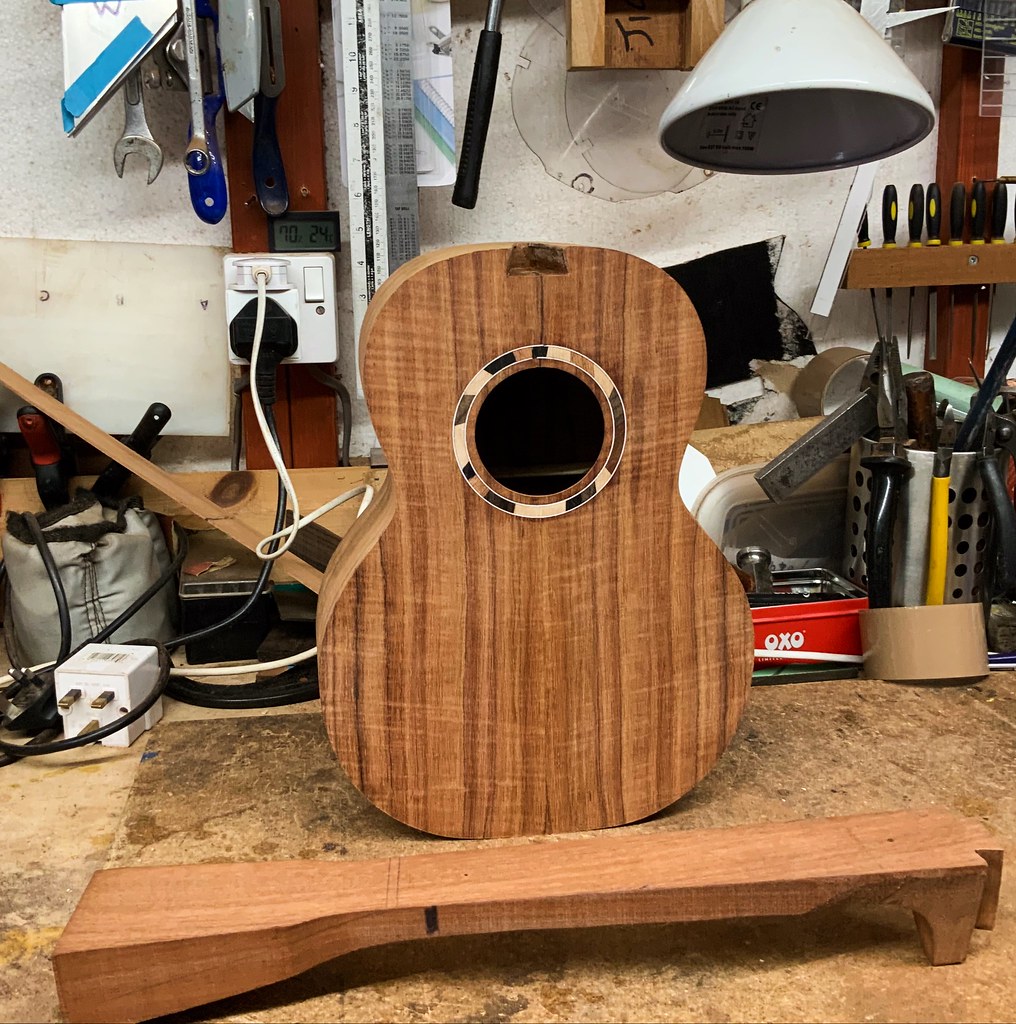sequoia
Well-known member
I love the nice and thin fan and transverse bracing... What I do a little different is to not tie off the fans to the lower transverse brace although doing it this way makes for a stronger construction and helps prevent the dreaded bridge rotation (bellying) down the line. My bridge plate is also is not that long
I do see what might be a potential problem down the line in that the neck block is skewed to the central axis. I get this too sometimes and it means shaping the neck heal slightly off to get a good, seamless join with a perfectly straight neck but structurally it is okay.
I do see what might be a potential problem down the line in that the neck block is skewed to the central axis. I get this too sometimes and it means shaping the neck heal slightly off to get a good, seamless join with a perfectly straight neck but structurally it is okay.



